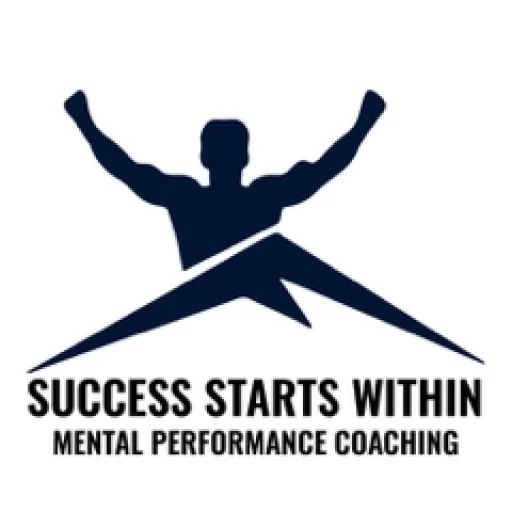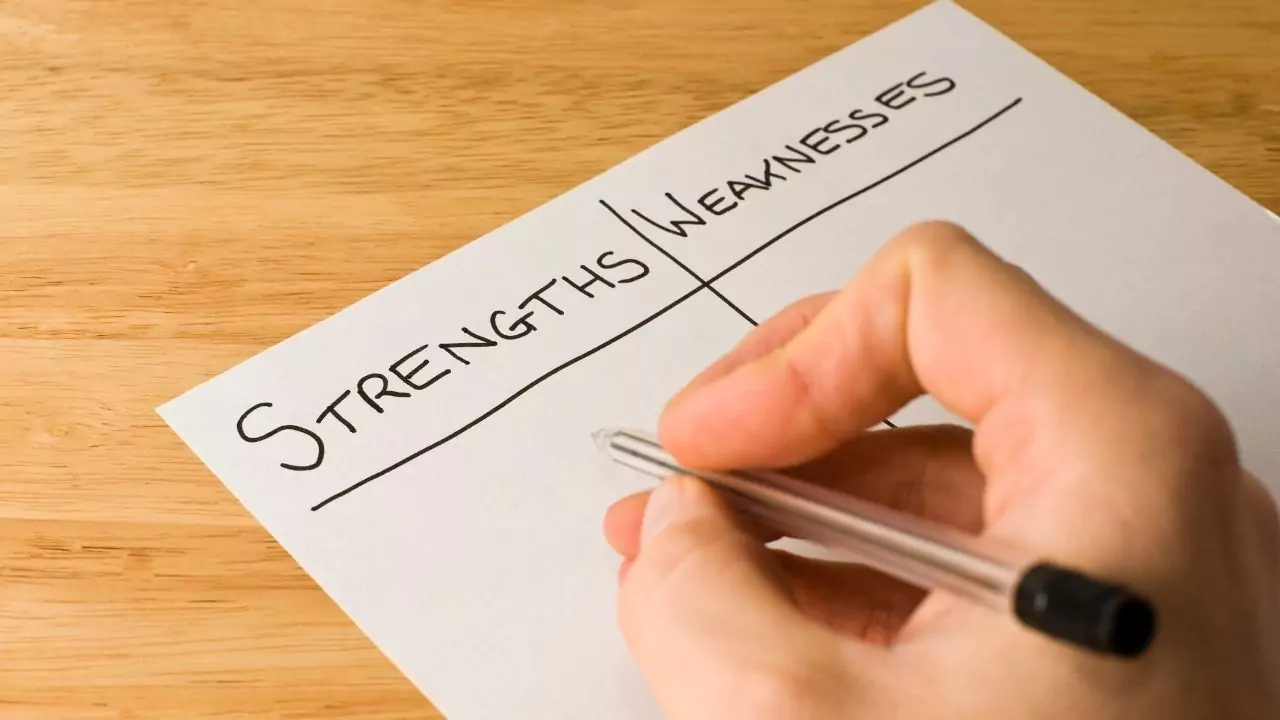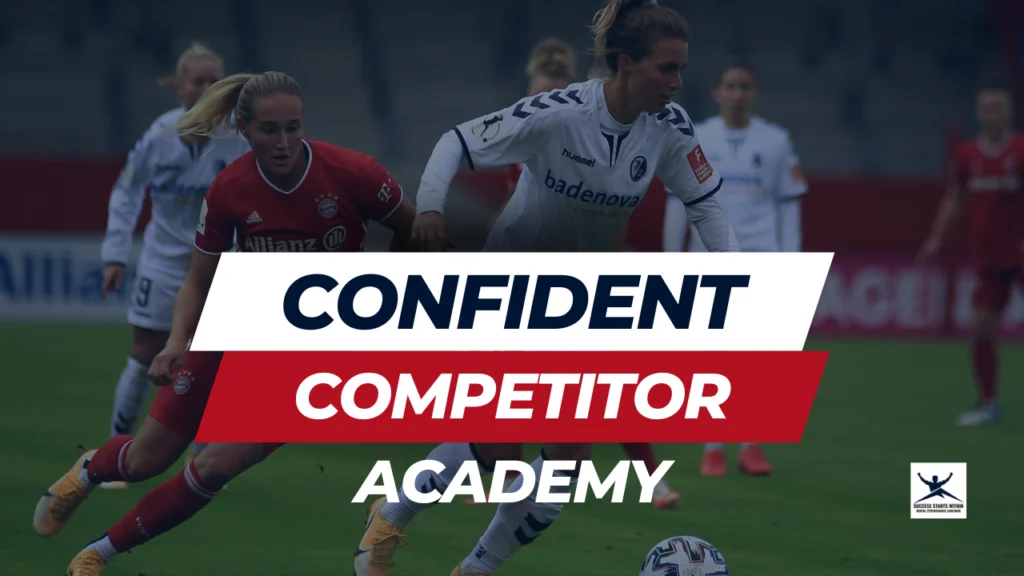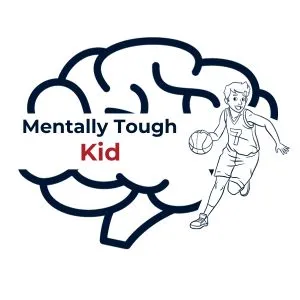Every athlete has certain strengths and weaknesses. There are areas of your game where you currently excel, and areas where you currently struggle.
Now as an athlete wanting to continually improve, I’m sure you’re not satisfied with the fact that there are weaknesses holding you back within your game. That’s why you want to work on turning your weaknesses into strengths.
As you do so, you don’t want to forget about your strengths, either. Otherwise they run the risk of turning into weaknesses themselves.
And so, you want to continue to build upon your strengths and improve the weak parts of your game. To do so, the first step is to identify your current strengths and weaknesses as an athlete.
Athletic Strengths
When it comes to your strengths as an athlete, these are going to be the things you do really well.
What will likely first come to mind are the physical skills at which you excel. Maybe you have a strong arm, quick feet, or good power. Those are all strengths you have as an athlete.
But there are other things that are considered strengths which you may not immediately think about. These include aspects of your mental game and qualities you possess, such as being coachable or having a strong work ethic.
Here are three categories to think about when examining your own strengths:
- Physical Skills: the parts of your game where you excel physically. Think about strength, speed, technique, and anything else that involves your physical play.
- Mental Skills: these will include characteristics like confidence, staying calm under pressure, focus, and anything else relating to the mental side of your game.
- Personal Characteristics: these may also be called character traits. For these, think about intangible qualities you have like a strong work ethic, or a high drive to succeed.
Athletic Weaknesses
Weaknesses are the parts of your game where you feel like you fall short. You won’t be as confident when it comes to these aspects of yourself and you may feel like they are holding you back from being your best.
Weaknesses can be frustrating to face, but they are important to understand because you want to work on improving the weaknesses you have control over improving.
The reason I say it like that is because there are weaknesses you can’t control. That’s why it’s good to break weaknesses down into two categories: physical weaknesses and overlooked skills.
Physical Weaknesses
This is a tricky subject. Because not all physical weaknesses are fully uncontrollable and they aren’t always weaknesses, though they may appear to be on the surface.
A prime example of a physical weakness is height in basketball. While there have been incredibly high level basketball players who were short, the majority of players are tall.
Height is seen as a strength. So we can gather that lacking in height may be a weakness.
Like I said, not always, but it can be.
Another physical weakness is speed. Speed can be improved, but there are some athletes who are naturally faster than others. So for you, lacking speed when it comes to sprinting may be a physical weakness.
Now the thing about physical weaknesses is, they can all be turned into strengths and used to your advantage if you do so properly. But that first requires you to identify them if they are aspects of your game that are currently holding you back.
Overlooked Skills
These are the parts of your game that have been overlooked in training. They may be small elements or large ones, but the truth is, you haven’t given them as much attention as other skills.
A lot of times this will be due to lack of enjoyment or the difficulty of working on a skill. That makes it very easy to overlook it and not give it as much attention during practice.
Another reason skills go overlooked is because you don’t realize how important they are until they show up as weaknesses holding you back within your game.
And another reason, as odd as it may sound, is that they were once a strength.
When something is a strength, it can be easy not to give it as much attention. After a while of taking the skill for granted, it slowly turns into a weakness.
Importance of Identifying Strengths & Weaknesses
Being able to identify your strengths and weaknesses is a necessary step towards improvement.
Not only is it a necessary step, but it’s the first step. How can we build upon our strengths or enhance our weaknesses if we have failed to identify them?
One of the greatest assets you have as an athlete is the ability to continually learn about and improve yourself.
Through the self-examination process that is required to find out where your strengths and weaknesses lie, you gain better insight into who you are as a player. This in turn increases your level of self-awareness.
When thinking about the importance of identifying strengths and weaknesses, we can look at the value in understanding each one individually.
Build Upon Strengths
It may be easier to understand the importance of identifying weaknesses rather than strengths, especially when thinking of ways to improve. We can get caught up in the idea that our strong points need little attention.
However, locating where your strengths lie is vital for multiple reasons.
First, you want to understand what parts of your game are strengths so that you can ensure they do not become weaknesses down the road.
All too often, we forget about our strengths and focus on the weak parts. This tends to result in the roles flipping.
Second, you must identify your strengths so that you can leverage them for success. If you discover you hold strength in certain skills you were unaware of, then you can use that to your advantage moving forward.
Third, you have to continually build upon your strengths. There is always room for improvement, so you should always be striving to become better.
By focusing on building upon your strengths you can make them stronger and stronger.
Improving Weaknesses
The importance of identifying your weaknesses is a little more straightforward. These are the parts of your game that you have determined are not your strong suits.
Once you’ve located them, you must decide on whether the weaknesses are areas you wish to improve upon.
Just because you’ve identified a weakness does not mean you have to then work on it, unless it seems to be holding you back in your sport.
But, even if you do not choose to improve the weakness, it’s important to identify it in order to build your self-awareness and understanding you have about yourself as an athlete.
How to Identify Your Strengths & Weaknesses
Now that you understand what strengths and weaknesses are and why they are important, it is time to work on actually identifying them.
To do so, having a plan in place will help.
Step #1: Brainstorm
Here you want to make yourself lists based on the three areas of strengths and the two areas of weaknesses outlined above.
It’s best to do your strengths first and then move onto your weaknesses. Make a list of all your physical skills, your mental skills, and your personal characteristics that are strengths.
Then you want to make two lists for your weaknesses. Outline your physical weaknesses and your overlooked skills.
Step #2: Consult Trusted Sources
After you have come up with your own lists, you want to consult with someone you trust.
It can be a parent, a coach, a friend, or anyone who knows you well. Go over the lists you have compiled with them. See which areas they agree with and which areas they disagree with.
The reason it is vital you choose someone you trust and that knows you well is to ensure the integrity of your list. You do not want someone who you distrust or someone who barely knows you to help identify your strengths and weaknesses.
Step #3: Field Test and Refine
By now you should have a good list of strengths and weaknesses put together with the help of a trusted source. Now it is time to test out your list and see if there are any adjustments that need to be made.
Mold this step to your personal lists, digging deep into each one of your strengths and weaknesses. After doing this, refine your list and then you should have a solid idea of where your strengths and weaknesses lie.
Final Thoughts
Identifying our strengths and weaknesses is an important activity to perform on a regular basis as an athlete. To understand what areas of your game are strong points and which areas you fall short is a vital step towards success.
Once you do, you can build upon your strengths and improve your weaknesses to put yourself in the best position to achieve your goals.
If you have any questions about identifying your strengths and weaknesses or any other sports psychology related topic, please feel free to reach out to me.
I hope that this article was helpful, and you can use the steps introduced to identify your own strengths and weaknesses.
Thank you for reading and I wish you the best of success in all that you do.




